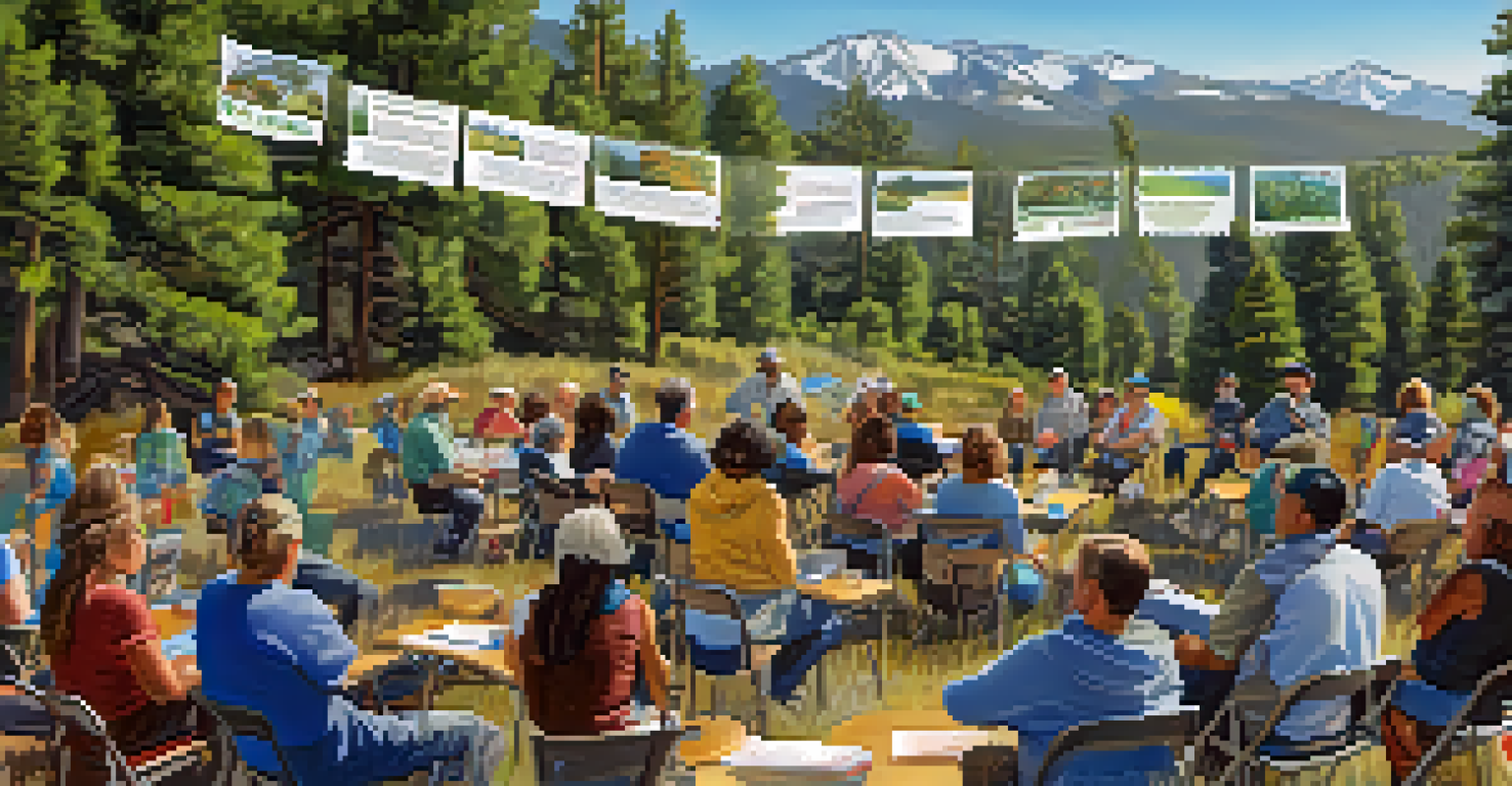Impact of Invasive Species on Big Bear's Ecosystem Health and Balance

What Are Invasive Species in Big Bear?
Invasive species are plants, animals, or pathogens that are non-native to an ecosystem and cause harm to the environment, economy, or human health. In Big Bear, these species disrupt the local balance, impacting native wildlife and plant populations. For instance, species like the zebra mussel and the European starling have made their way into the area, posing significant challenges to the local ecosystem.
Invasive species are the second greatest threat to biodiversity after habitat loss.
These invaders often outcompete native species for resources such as food, space, and light, leading to declines in the populations of local plants and animals. The introduction of invasive species can have a ripple effect, altering habitats and food webs, which can take years for the ecosystem to recover from. Understanding what these species are is the first step towards mitigating their impact.
It’s important for residents and visitors to recognize these invaders and their potential consequences. By fostering awareness, we can work together to protect Big Bear's unique biodiversity and preserve its natural beauty for future generations.
How Invasive Species Affect Local Wildlife
Invasive species can dramatically alter the habitat available for native wildlife in Big Bear. For example, when non-native plants take root, they can choke out local flora that native animals rely on for food and shelter. This change can lead to a decline in animal populations that depend on those plants, creating a domino effect throughout the ecosystem.

Moreover, invasive animals can introduce diseases that native species are not equipped to handle. This can lead to further declines in populations, disrupting breeding patterns and reducing genetic diversity. Imagine a once-thriving bird population struggling to find food and nesting sites; that’s the reality invasive species can create.
Invasive Species Harm Ecosystems
Invasive species disrupt local wildlife and plant populations in Big Bear, leading to ecological imbalances.
The balance of nature is delicate, and when one species is introduced that disrupts this balance, the consequences can be severe. Protecting the health of local wildlife means addressing the threats posed by invasive species head-on.
The Impact on Native Plants and Vegetation
Native plants are essential for maintaining the health of Big Bear's ecosystem. They provide food and habitat for wildlife, stabilize the soil, and contribute to the overall aesthetic of the area. However, invasive species can outcompete these plants, leading to a decline in biodiversity and changes in the landscape.
The greatest threat to our planet is the belief that someone else will save it.
For instance, if an invasive plant species spreads rapidly, it can overshadow native plants, limiting their access to sunlight and nutrients. Over time, this can lead to a monoculture, where one species dominates the landscape, further diminishing the variety of life in the area. Think of it as a once vibrant garden overtaken by a single aggressive weed.
This loss of diversity not only affects plants but also the animals that depend on them. Protecting native plants is crucial in ensuring that the ecosystem remains healthy and balanced, highlighting the need for conservation efforts.
Economic Impacts of Invasive Species
The effects of invasive species extend beyond environmental concerns; they can also have significant economic impacts. In Big Bear, tourism plays a crucial role in the local economy, and a declining ecosystem can deter visitors. Imagine coming to a beautiful lake only to find it overrun with invasive weeds—such experiences could lead tourists to seek other destinations.
Moreover, managing invasive species can be costly for local governments and conservation organizations. Expenses related to removal efforts, habitat restoration, and public education can strain budgets, diverting funds from other important community projects. It’s a challenge that requires attention and resources.
Economic Costs of Invasive Species
The presence of invasive species can deter tourism and strain local budgets due to management and removal efforts.
By understanding the economic implications of invasive species, we can encourage community involvement in prevention and management efforts. Protecting Big Bear is not just about ecology; it’s about preserving the local economy and the livelihoods that depend on it.
The Role of Climate Change in Invasive Species Spread
Climate change is altering ecosystems around the world, and Big Bear is no exception. Warmer temperatures and changing precipitation patterns can create more favorable conditions for invasive species to thrive. As native species struggle to adapt, invasive species may find new opportunities to establish themselves.
For example, as snow melts earlier in the spring, invasive plants may begin growing sooner, giving them a head start over native competitors. This shift can lead to a greater prevalence of invasive species in the area, further threatening the balance of the ecosystem. It’s like a race where the rules keep changing, and the favorites often fall behind.
Addressing climate change is not just an environmental issue; it's also crucial for maintaining the integrity of ecosystems like Big Bear’s. By understanding these connections, we can take meaningful steps toward mitigating the impact of climate change on invasive species.
Community Involvement in Combatting Invasive Species
Community involvement is vital in the fight against invasive species in Big Bear. Local residents can play a significant role in monitoring and reporting invasive species sightings, participating in removal efforts, and spreading awareness about the issue. Every little action counts, from organizing community clean-up days to simply educating friends and family about the importance of biodiversity.
Environmental organizations often host workshops and events that invite community members to learn more about invasive species and how they can help. These gatherings provide valuable information and foster a sense of unity in the mission to protect Big Bear’s natural environment. Think of it as a neighborhood watch for nature—everyone looking out for the health of the ecosystem.
Community Action is Essential
Community involvement is crucial in monitoring and combating invasive species, fostering a united effort to protect Big Bear's natural environment.
By coming together as a community, we can create a powerful force against invasive species. Each person’s involvement can make a significant difference, leading to a healthier and more balanced ecosystem for all.
Future Steps for Big Bear's Ecosystem Health
Looking ahead, it’s crucial for Big Bear to implement proactive strategies to combat invasive species. This includes developing comprehensive management plans that focus on prevention, early detection, and rapid response. By staying ahead of the curve, we can minimize the impact of these invaders before they take hold.
Collaborating with scientists, local governments, and conservation groups can help create effective policies and practices that prioritize ecosystem health. This teamwork is essential for not only dealing with current invasive species but also preventing new ones from entering the area. Imagine a well-coordinated relay team, each member playing their part to keep the baton moving smoothly.

Ultimately, the health of Big Bear’s ecosystem is in our hands. By taking decisive action and fostering community engagement, we can ensure that this beautiful area remains vibrant and balanced for generations to come.